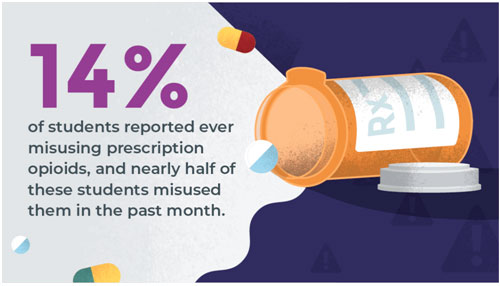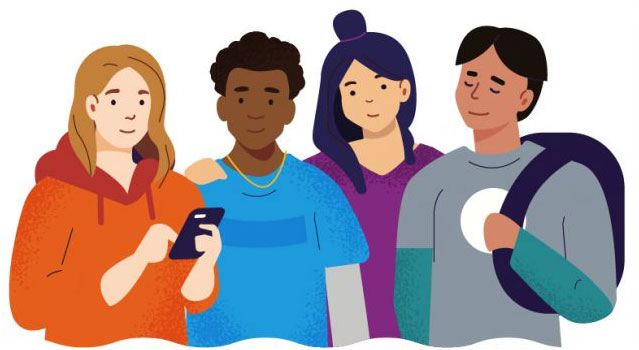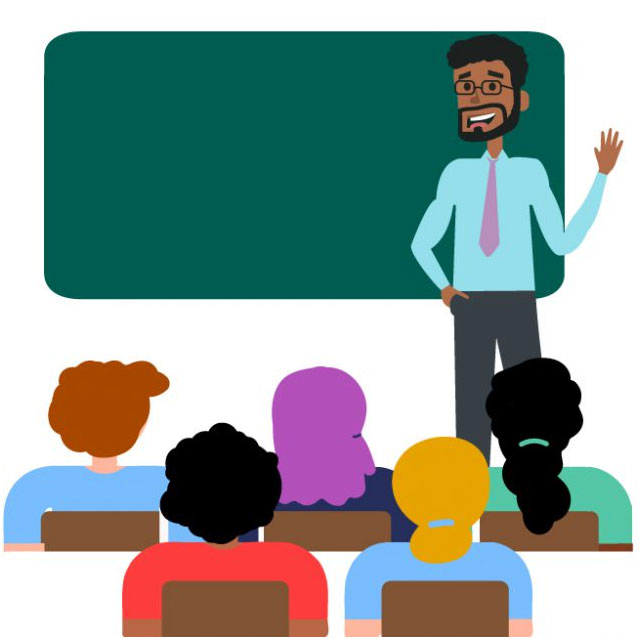Underage drinking and use of other substances isn’t harmless fun. Adolescents are going through a critical period of physical and emotional growth. Kids who drink or use drugs during this time can suffer real damage—exposing their developing brains, lives, and mental health to serious, even deadly, consequences. Help the kids in your life understand the risks by getting the facts for yourself.
How kids get their hands on alcohol
For most youth, underage drinking usually happens at home or a friend’s house. But how kids get alcohol can change as they grow, and often depends on their age and how accessible beer, liquor, and other beverages are where they live and hang out.
They sneak it.
Two out of three teens say it’s easy to take alcohol from home without a caregiver noticing. Unlocked liquor cabinets and beer fridges don’t help.
They buy it.
A quarter (25%) of 11th grade drinkers admit to buying alcohol from a retailer, like a gas station or grocery, liquor, or convenience store.
They ask for it.
Often, older friends, siblings, and parents supply kids with alcohol. In fact, one in four teens report that they have attended a party where kids drank in front of adults.
Know the consequencecs
There’s a reason the legal drinking age is 21. It’s to keep our kids healthy and safe. When youth drink alcohol, they can damage and even block the development of healthy mental pathways in the brain that shape how kids feel, learn, behave, and grow. Damage like that can have lifelong physical, social, and emotional consequences.
Illegal drug use increases the likelihood that youth will engage in risk behaviors that can have dramatic, and lasting effects on their health and academic performance.
Illegal drug use refers to any use by adolescents of drugs with a high risk of adverse outcomes, such as injury, criminal justice involvement, school dropout, and loss of life. This includes:
• Misuse of prescription drugs
• Vaping or using other products containing nicotine
• Use of illegal drugs like cocaine, heroin, methamphetamines, inhalants, hallucinogens, or ecstasy
• Use of injection drugs, which have a high risk of transmitting HIV and hepatitis
Youth who use these drugs are more likely to also:
• Engage in risky sexual behaviors (not using a condom, multiple partners).
• Experience violence, such as physical and sexual dating violence, and being bullied, threatened, or injured.
• Be at greater risk for mental health problems and suicide.

Youth opioid use is linked to risky behaviors like not using a condom and that can lead to HIV, STDs, and unintended pregnancy.
These health risk behaviors and experiences put youth at greater risk for sexually transmitted infections, like HIV and other STDs, and unintended pregnancy. Some of these behaviors, like drug use and having sex at an early age, are also consistently linked to poor grades, test scores, and lower educational attainment.
Preventing Illegal Drug Use
We can take steps to prevent adolescent drug use that will help them stay healthier for decades to come and perform better in school. A majority of adults with substance use disorders and addictions started during their adolescent and young adult years. Schools, parents, and families can help prevent high-risk drug use, both individually and by working together.

Schools
Schools can use strategies shown to prevent illegal drug use and other risk behaviors:
• Create safe and supportive school environments that successfully connect students to a network of caring peers and adults in school and the surrounding community. Provide training for staff, programs focused on positive youth development, policies that support all youth, and activities, such as student-led clubs that support LGBTQ youth.
• Deliver quality health education and sexual health education that prepare students with the knowledge and skills needed to make informed health decisions.
• Connect students to mental and sexual health services at school or in the community.

Schools can also foster school connectedness and parent engagement in schools, two key factors that protect students from using drugs and from other health risk behaviors and experiences:
• Make students feel connected by showing them that adults and peers in their school care about them as individuals. Implement strategies and actions to strengthen school connectedness among your students.
• Find ways to work together with parents and families to support and improve the learning, development, and health of your students and their adolescents.
Safe and supportive environments can foster both school connectedness and parent engagement.
They also support youth mental health and well-being. Both are linked to better student behavior and academic performance.
Parents and Families
Schools, families, and communities should work together to build a safe environment for youth at school and at home.
• Talking to youth about drug use and sexual risk behaviors tells them someone cares about them.
• Getting engaged in and involved at their schools can make a big difference in their lives and doesn’t have to take a lot of time.

Studies show that parental involvement in the lives of adolescents can reduce the chance that they will use nonmedical prescription, and illegal drugs. Parents and families can:
• Communicate honestly and openly with adolescents about the risks of using drugs and engaging in sexual risk behaviors to help them make healthy decisions and protect their health now and in the future.
• Learn more about what is going on at school in ways that fit your schedule, communicate what you think would be helpful, and read information that comes home.
• Help adolescents feel more connected to school, which can protect them from engaging in risky behaviors like using high-risk drugs, by taking these concrete steps to promote connectedness among youth.
Resources
Briarpatch Parent Support Program provides help to parents and caregivers of youth who are experiencing a variety of challenges including drug or alcohol misuse, mental health challenges and truancy. The group meets virtually twice a month. To join, email the program coordinator for information and a link.
SAMHSA’s National Helpline, 1-800-662-HELP (4357) (also known as the Treatment Referral Routing Service), or TTY: 1-800-487-4889 is a confidential, free, 24-hour-a-day, 365-day-a-year, information service, in English and Spanish, for individuals and family members facing mental and/or substance use disorders. This service provides referrals to local treatment facilities, support groups, and community-based organizations.
Partnership to End Addiction offers one-on-one help via text, email, and phone consultations (by appointment). Text 55753 or complete the form at drugfree.org. Visit drugfree.org for more information.
United Way of Dane County has an information and referral service to help with access to a wide range of situations. Call 211 from any phone. Available 24/7 and in almost any language.
Parent Stressline of Dane County offers parents a place to talk, process stress and connect with a compassionate advocate. A program of The Canopy Center, Madison. Open 8 am to 10 pm every day at 608-241-2221.
New York State Kinship Care Toolkit provides support to individuals caring for children impacted by parental addiction and/or overdose. Some or the resources are state specific, but many are universal. Visit their website.
Generations United works to improve the lives of children, youth and older people through intergenerational collaboration, public policies and programs for the enduring benefit of all. Visit their website.
Grandfamilies.org is a national legal resource in support of Grandfamilies within and outside the child welfare system Visit their website.
Wisconsin Grandfacts has state and county specific data and information on public benefits, legal relationship options and state laws as well as links to county agencies that support Grandfamilies in Wisconsin. Available in English and Spanish. Download
US GrandFacts includes national information and resources for Grandfamilies. Download
Parent Resource Guide: Created by statewide prevention partners NEWAHEC and AWY, this guide includes information from state and national resources about a variety of topics. Download the guide.
Protect Your Brain: An education and awareness campaign featuring videos that teach teens how to protect themselves from substance use disorder. www.addictionpolicy.org
Phone Resources
National Suicide and Crisis Lifeline – 988
Never Use Alone – 800-484-3731 or 877-696-1996
WI Addiction Recovery Helpline – 211
Available 24/7
WI Harm Reduction Response Team (HRRT) – 608 - 504 - 7700
Behavioral Health Resource Center of Dane County – 608 - 267 - 2244
SAMHSA Helpline – 1-800-662-HELP (4357) or TTY: 1-800-487-4889
Treatment referral and information service – 24/7, free, confidential, available in English and Spanish
SAMHSA Text Line – send your zip code to 435748 (HELP4U)
Resources about Substance Use
SAMHSA Helpline
NEXT Distro -- Wisconsin
Find Treatment
Dane County Public Health -- Overdose Training
Behavioral Health Resource Center (Dane County)
WI Sharps Collection Stations
CDC -- Stop Overdose
Harm Reduction
Harm Reduction Principles
National Harm Reduction Coalition
WI DHS -- Harm Reduction
Harm Reduction History
-
Awkward Breakfast Conversations (Episode 1)
In episode 1 of Awkward Conversations, the discussion between parents and their daughter turns an innocent table-side conversation to one about drugs and its impact on young teens. -
Awkward Breakfast Conversations (Episode 2)
The second episode of Awkward Conversations explores the physical and emotional toll that addiction takes on the well-being of high-functioning adults and their loved ones. -
Awkward Breakfast Conversations (Episode 3)
The conclusion to Awkward Conversations centers on how to responsibly navigate high school parties - a daunting reminder to parents that their child is growing up.




